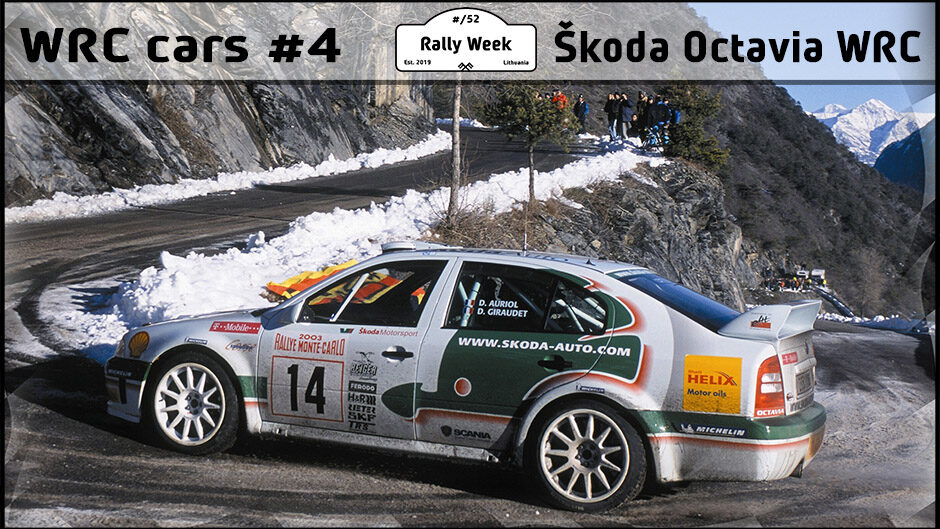Skoda’s debut in the World Rally Championship 🙂
Authors of the text– Gabrielius Kapočius, Vilius Šaltenis
When you think of Škoda Octavia, the first image that probably comes to mind is a car covered with Taxi signs or a small sticker of some company. But there was a time when the Škoda Octavia was a much meaner car than it is now. Not to mention its beauty. In a poll published by Dirtfish, Škoda Octavia WRC was chosen as the most beautiful WRC car. Either the Czechs participated in the poll very patriotically and in large numbers, or that huge sedan running through the special stages really left a lot of sentiments in the hearts of the rallying public.
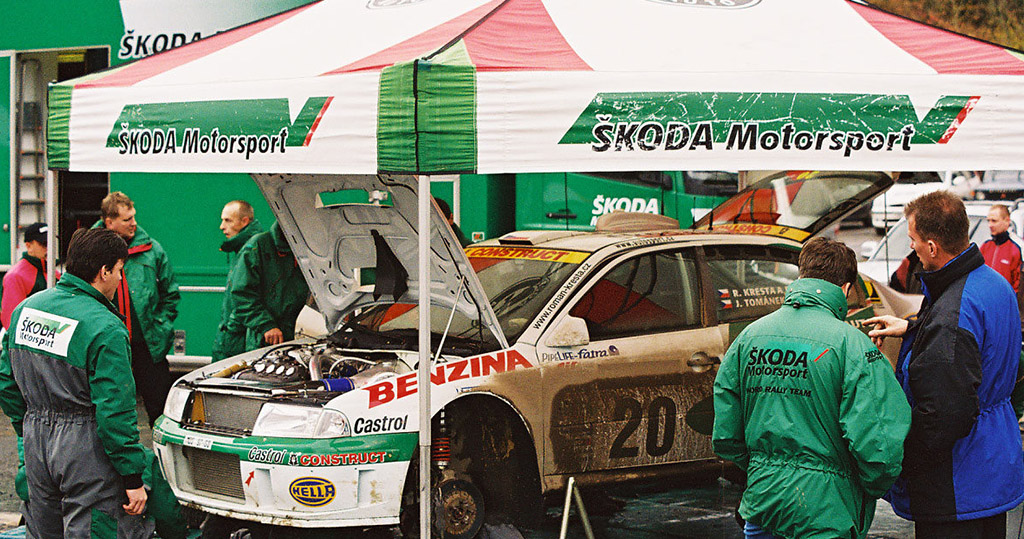
Before Škoda decided to step into the sandbox with the big boys, the concern already had several successful models. Škoda Felicia ran in various championships, and she was supported by the same Škoda Octavia. Only the latter model had the Kit-car attachment in its name. In those days of the last millennium, the Kit-car or F2 class was quite popular. These were serious factory cars with two-liter naturally aspirated engines. True, they were driven only by the front wheels. However, their power, low weight, and technical solutions allowed good drivers to fight WRC cars on dry asphalt. Well, it was much more difficult to control that power on gravel, but if you wanted and were able, you could catch N group Mitsubishi or Subaru cars.
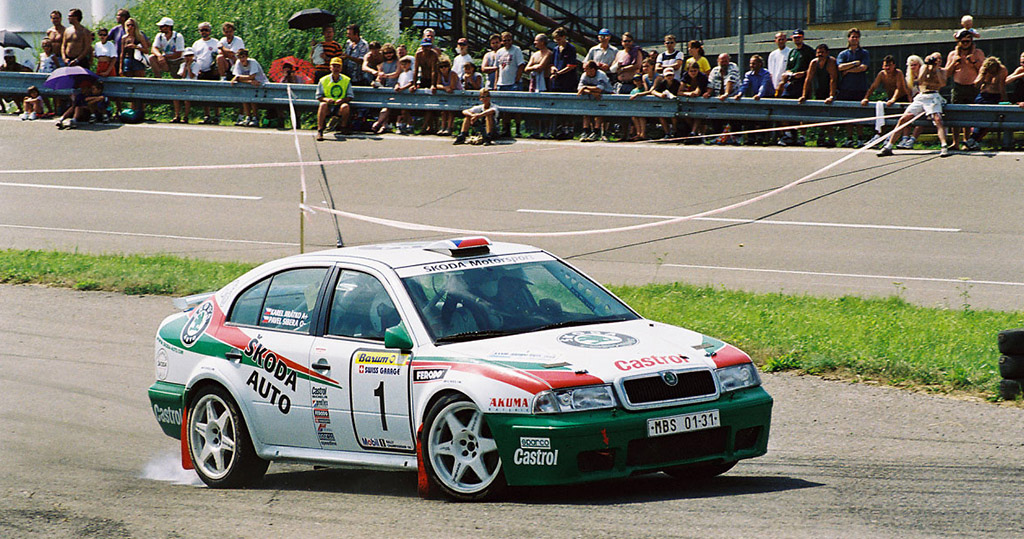
What did Škoda do? Took that Octavia Kit-car and turned it into a WRC. Another engine, four-wheel drive, and other necessary nuances were added and this car made its debut at the 1999 Monte Carlo Rally. However, the speed and forces of the WRC cars were much higher than the Kit-Car, so it took almost half a year for the Octavia WRC car to at least finish the WRC rally. Everything went wrong – clutch, electronics, power steering, fuel pump… However, as the year progressed, Armin Schwarz, and Emil Trenir managed to reach the finish line, but it was far too early to talk about the results.
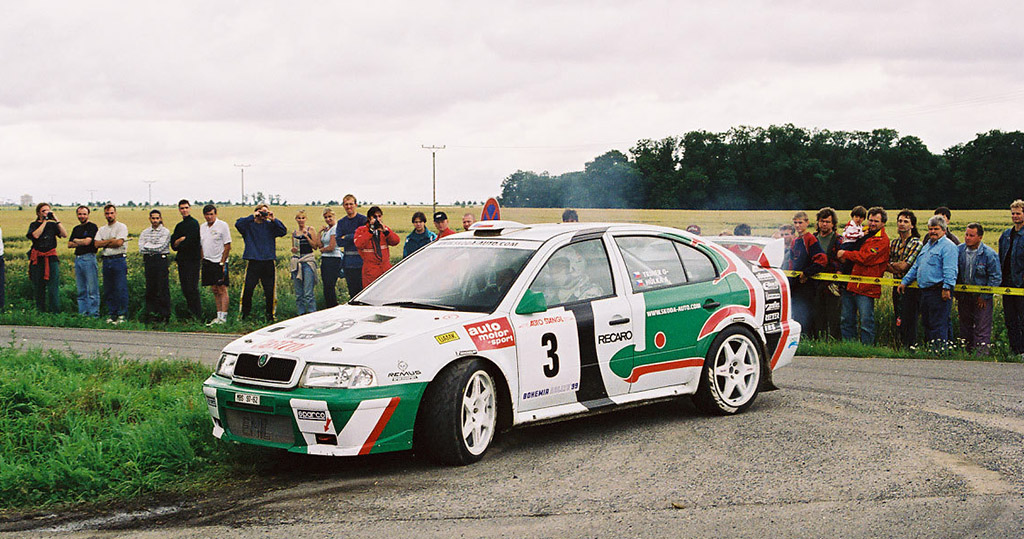
At the dawn of the new millennium, the car received a number of improvements and was called Škoda Octavia WRC EVO 2. A.Schwarz was joined by Spaniard Luis Asensio Climent, and in the Czech Republic Octavia was driven by local pilots. However, the improvements were not a panacea and Škoda did not challenge the Ford Focus WRC, Subaru Impreza WRC, or Group A Mitsubishi Lancer cars. Only in 2000, Armin managed to finish fifth in the rally Greece.

For another two years, Škoda tried not to give up, chasing rivals. And once, in 2001, It worked quite well in the Safari Rally. Škoda’s only WRC podium was won there, with Armin Schwarz leading the way. In 2002 Škoda sometimes entered 4 cars in the WRC events. In local championships, this car was quite popular and won quite a few victories. Improvements continued and later the Škoda Octavia WRC EVO 3 variant appeared. However, the third evolution of this sedan ended in the same year, because in the second part of 2003, the Octavia was withdrawn and space was freed for the new Škoda Fabia WRC model.
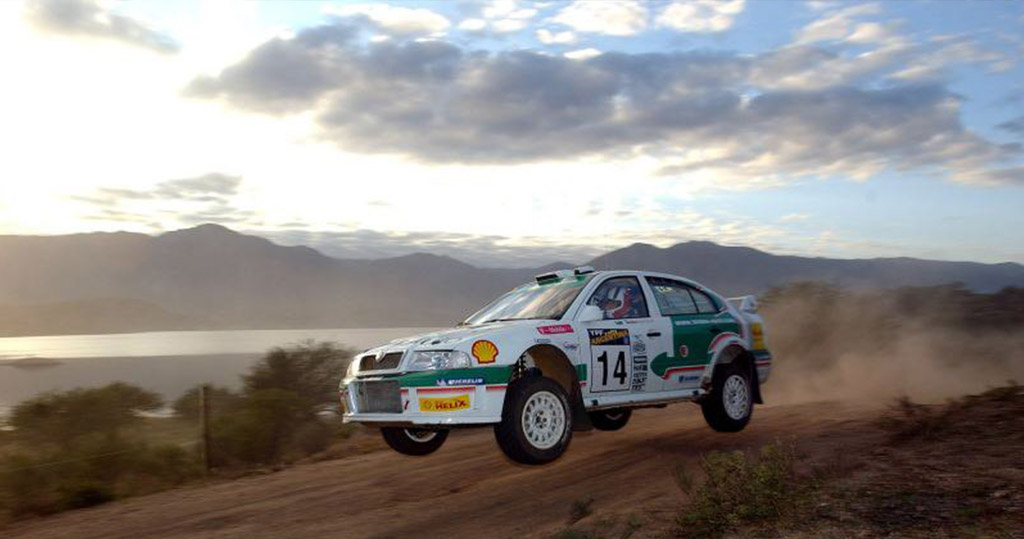
So why didn’t the Škoda Octavia WRC, which had a bunch of great Czech engineers working on it, didn’t become a real title contender? Well, first of all, Škoda did not have world-class drivers, although those who collected points little by little in the team standings for Škoda could not be called slow either. These were Armin Schwarz, Toni Gardemeister, Roman Kresta, Bruno Thiry, Kenneth Eriksson. In those days, the competition was also very high. The fact that among the competitors there was SEAT belonging to the same VAG group did not help. This is the era when the WRC was so successful that the VAG group even had two teams – Škoda and SEAT. But it was also a shot in the foot, as the WRC budget was split in two. So neither Škoda nor SEAT had enough resources to compete with Ford, Subaru, Peugeot, or Mitsubishi. Finally – Octavia herself. In order to participate in the WRC, the Czechs had no choice but to build a car based on the Octavia, because the rest of Škoda’s range of cars did not fit due to one simple thing – the size. The only Octavia was big enough to qualify. Well, the competitors successfully circumvented this rule, as did the same Škoda later. Peugeot put wide fenders and bumpers on the 206 and suddenly the car became eligible for WRC. Škoda later did the same with the Fabia, which has an even shorter wheelbase than the Peugeot 206.
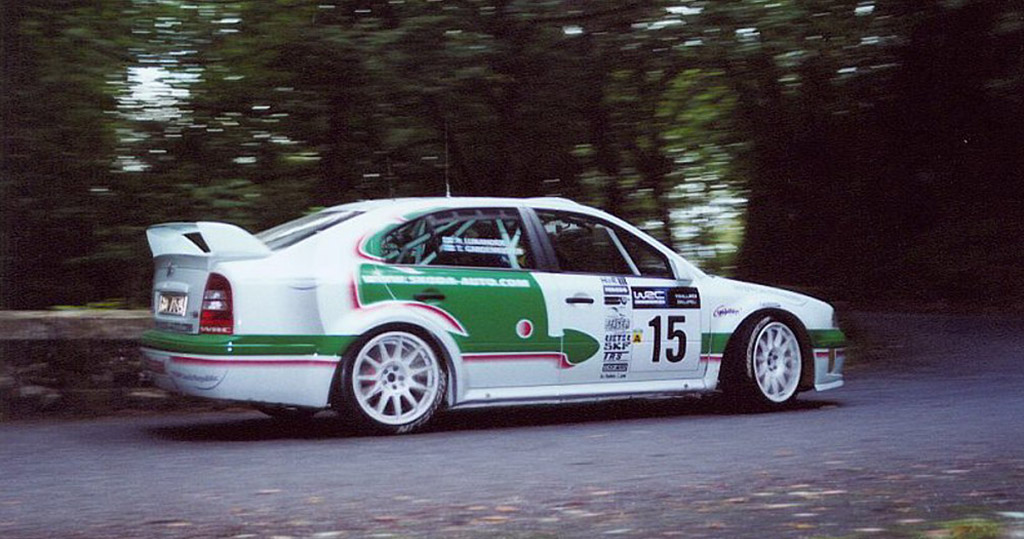
Back to Octavia. Although it was the smallest Škoda model available, it was a bit too big for the WRC stages. It lacked agility and maneuverability – it was swimming quite widely on the road compared to its competitors, but such a large body had its advantages. It was probably the strongest car among its competitors. After all, this is the World Rally Championship, not a rally raid – so the natural speed of smaller cars was far more important than strong chassis. The WRC rallies at that time were much longer than today’s, but it was not helping Octavia. However, the strength of the car and special preparation bore fruit – Škoda’s only podium in the WRC overall standings.
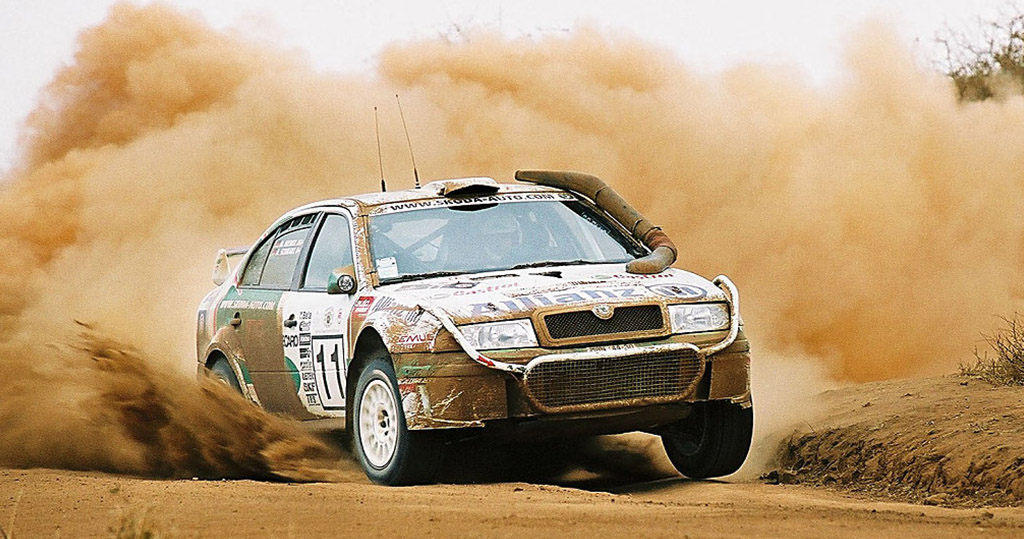
Armin Schwarz came to the engineers and said – we can reach the podium in the Safari rally, but we need to prepare for it. The preparation included the improvement of shock absorbers, guards, and other units, a bunch of spare parts, and other solutions so that the car could withstand almost 1300 kilometers of very hard special stages. This was the only place where the strength of the Octavia had a real advantage over other cars. However, all those improvements made a big line in the financial statements and the engineer had to talk hard to get the team boss to allocate funds for all the improvements. After Armin Schwarz made a firm promise that the podium would be there – the purse was opened. The German fulfilled his promise – while the competitors were falling apart, Armin moved up the ranks and eventually climbed onto the third-place podium step.

Although the Octavia WRC program ended in 2003, these cars completely conquered the championships of various European countries. Škoda sedans started a little more than a hundred times a year and scored dozens of victories both in their native Czech Republic and elsewhere. And this continued for a very long time, and only in recent years has the Škoda Octavia WRC become a rarity in special stages. Now, these Škodas appear only in Sweden, Finland, and at the Goodwood Festival of Speed in Great Britain.
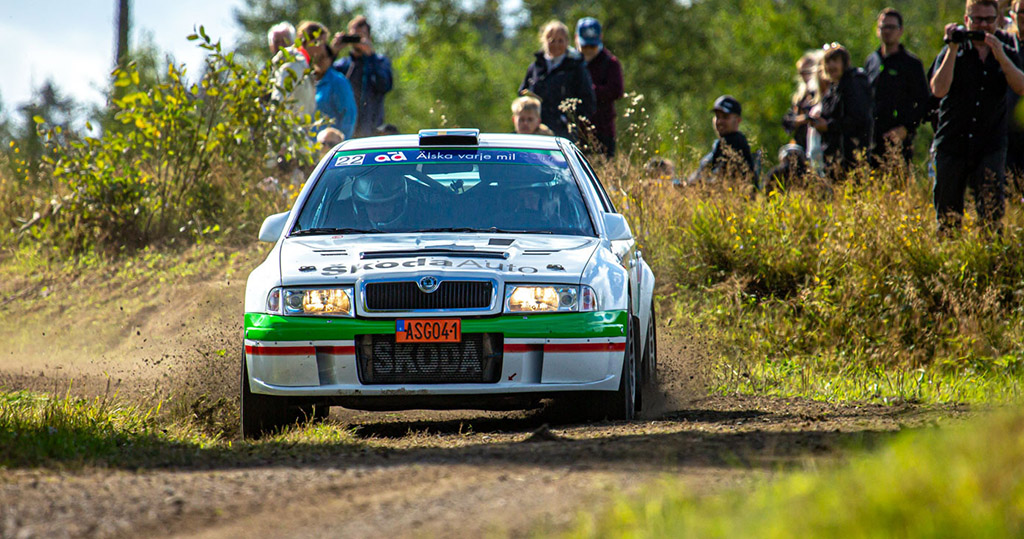
WRC Program 1999 – 2003
Units made – 25
The highest place in the WRC – 3 (2001, A.Schwarz – Safari Rally Kenya)
Photos – Daniel Halsten, ewrc.cz, Petr Fitz, Jan Marek,

